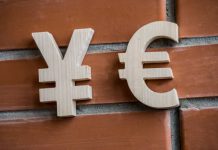Markets
Yesterday, (equity) markets turned into correction modus after a stellar, China inspired rally on Monday. European stocks opened lower an soon recorded losses of about 1.5%. There was few eco data or other news but, if anything, it supported profit taking. German May production rebounded less than hoped for. The EC downwardly revised EU 2020 growth to a 8.7% contraction and warned on divergent developments between EMU members. OESO saw a difficult recovery for labour markets this and next year. European equites closed with losses of about 1%. US equities opened in the red. An intraday rebound triggered additional profit taking (close Dow -1.51%; the Nasdaq – 0.86%). German Bunds/yields still decoupled from the risk-off closing mixed (5-y +1.5bp; 30-y -1.3bp). US Treasuries outperformed. The US curve bull flattened with a late session rally of the long end of the curve. 2-y yields were little changed but the 10-y (-3.6 bp) and 30-y (-6.4 bp) performed strongly. Soft comments from Fed governors Clarida and Mester supported the bid for Treasuries. A US 3-year auction (record $46 bln) met decent investor interest. Auction stopped at a record low yield of 0.19% (WI bid 0.189%) with an average bid cover of 2.44. The dollar rebounded early in the session, but the move slowed later. EUR/USD closed at 1.1274 (from 1.1309). Sterling succeded a technical break. EUR/GBP tested 0.90 several times of late and finally broke below despite the risk-off (close at 0.8989).
This morning. Asian equities are trading mixed, with China still outperforming (mainland +1%). US futures trade slightly in the red. There is little high profile news. Reports suggest that the US might take action to undermine the peg of the Hong Kong dollar to the USD. USD/HKD is trading little changed near 7.75. The yuan maintains most of the gain from earlier this week (USD/CNY 7.02). Australian equities underperform on the new corona outbreak in Victoria, but the damage for the Aussie dollar remains limited (AUD/USD 0.6940 area).
Later today, there are hardly any eco data worth mentioning in Europe or in the US. Auctions maybe might inspire some intraday jitters in the bond markets. Germany will sell €5 bln of 2025 bonds. The US will sell $29 bln of 10-y note. Yesterday, the belly of the German yield curve slightly underperformed. LT US bonds (10-y and even more 30-y) recently performed well as the steepening trend from May/early June is further unwound. US 10-y yields are gradually drifting lower in the established consolidation pattern. Even so, especially if sentiment on risk turns a bit more cautions, the 10-y sale still might go south. The US 10-y breaking below the 0.62% area might open the way for a return to the 0.54% range bottom. On the FX markets, the dollar is in consolidation modus. EUR/USD failed to break the 1.1350 resistance. Some further correction is possible in a daily perspective. However, the 1.1160/1.1185 area is a tough support. EUR/GBP yesterday dropped below the 0.90 barrier, improving the ST picture for the UK currency. At the start of a new round of Brexit talks, UK PM Johnson told German Chancellor Merkel that the UK is still prepared leave the EU without a deal if the EU does compromise. Later today, UK Fin Min Sunak will propose new measures to support the UK economic recovery. The day-to-day momentum in EUR/GBP is easing, but for now, we assume any further sterling gains to stay modest.
News Headlines
The Fed discount rate meeting minutes from the period covering May 18 through June 10 showed that regional Fed directors are still seeing an “exceptionally high” pace of job losses. They also expressed concerns over the construction sector, noting few new projects in the pipeline, and “subdued consumer spending” even as many nonessential business began reopening.
The US White House sent a letter that starts the one-year notice period before exiting the WHO after joining the health organization in 1948. The move comes as US president Trump accuses the institution of helping China to hide the facts about Covid-19. The US is a major contributor to the WHO’s budget, providing more than 16% of the funds.













